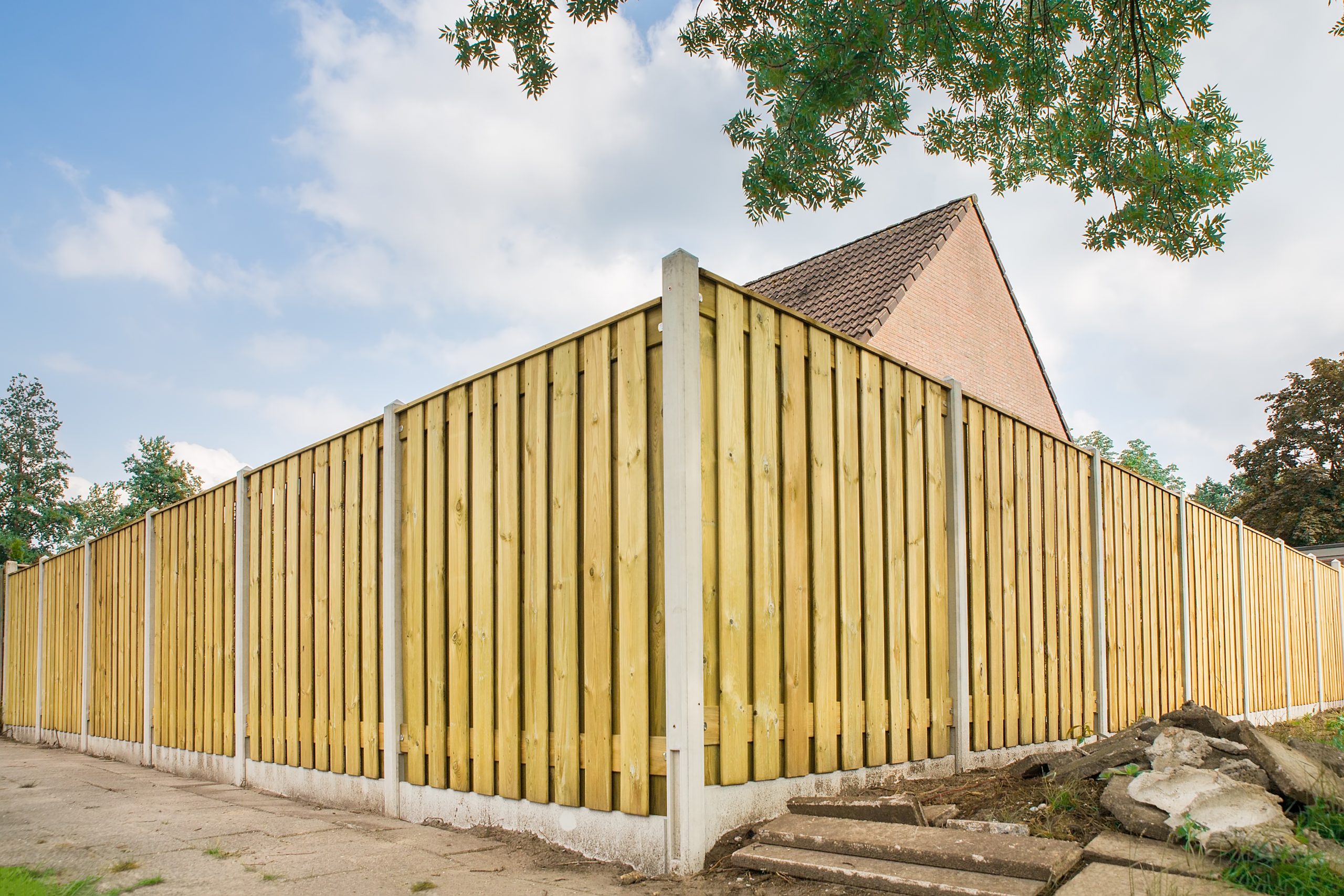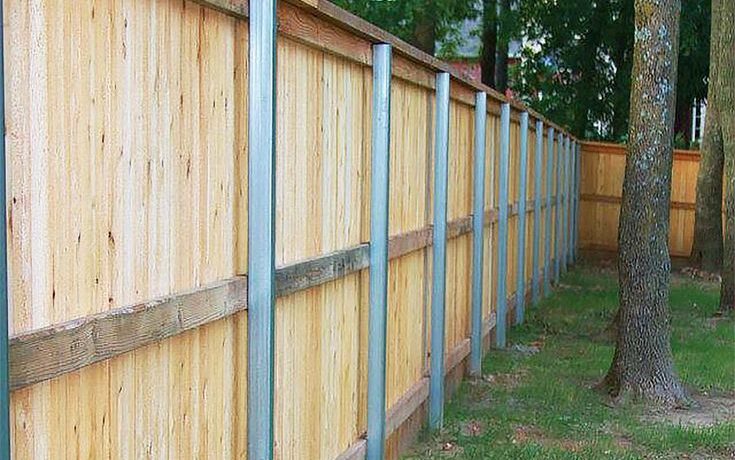All Categories
Featured
When it pertains to preserving a wooden fencing, property owners frequently face the choice of whether to repaint or stain. Both choices have their benefits and drawbacks, and the selection eventually depends upon your aesthetic preferences, the kind of wood, and how much maintenance you're willing to commit to. Here's a detailed comparison to aid you make an informed choice.
The Basics of Paint and Discoloration
Painting includes covering the timber with an opaque layer of shade. It provides complete coverage, concealing the wood grain while using excellent defense versus ecological elements.
Tarnishing permeates the timber, boosting its natural elegance while including a protective layer. Depending upon the kind, spots can vary from transparent to strong, enabling differing degrees of wood grain presence.
Pros and Disadvantages of Painting
Pros:
Large Range of Colors: Repaint offers limitless shade alternatives, allowing you to match your fencing to your home's outside or personal design.
Longer Enduring: High-quality outside paint can last as much as 5-7 years, needing much less constant reapplication.
Superior Protection: Repaint forms a thick, solid obstacle against dampness, UV rays, and insects.
Cons:
Peeling Off and Fracturing: Over time, paint can fracture or peel, especially in locations with extreme climate condition.
Hides Natural Wood Elegance: If you like the all-natural grain of timber, paint might not be the very best choice.
Higher Maintenance: Repainting needs scraping off the old paint, which can be labor-intensive.
![]()
Pros and Disadvantages of Staining
Pros:
Natural Appearance: Spots preserve and boost the natural appeal of the wood, making it perfect for premium hardwood like cedar or redwood.
Less Complicated to Reapply: Unlike paint, discolorations don't peel or fracture. Reapplying tarnish normally needs less surface preparation.
Adaptable End Up Choices: Stains come in clear, semi-transparent, and solid ranges, supplying various levels of coverage.
Cons:
![]()
Much Shorter Lifespan: Discolorations, semi-transparent and specifically transparent ones, may need reapplication every 2-3 years.
Limited Shade Choices: While stains use all-natural tones, they lack the broad shade palette readily available with paint.
Less Protective: Spots pass through the timber yet do not give as thick an obstacle as paint, making them slightly much less safety versus extreme weather.
Elements to Consider
Aesthetic Preferences: If you want vibrant shades and full protection, paint is the way to go. For a natural and rustic look, opt for discolor.
Timber Type: Top quality timbers with stunning grains take advantage of staining, while lower-grade timbers can be painted for a refined appearance.
![]()
Environment: In damp or moist environments, paint's thicker obstacle might supply better security. In moderate or dry climates, stains can be sufficient.
Upkeep Commitment: Painting includes less frequent reapplication however more initiative during touch-ups. Staining calls for regular maintenance however is much easier to handle.
Last Thoughts
Both paint and staining can efficiently protect and improve your wooden fencing. The very best option depends upon your priorities, whether they lean towards looks, sturdiness, or ease of upkeep. By understanding the benefits and downsides of each, you can choose the finish that straightens with your needs and ensures your fencing remains a standout attribute of your home for several years ahead.
The Basics of Paint and Discoloration
Painting includes covering the timber with an opaque layer of shade. It provides complete coverage, concealing the wood grain while using excellent defense versus ecological elements.
Tarnishing permeates the timber, boosting its natural elegance while including a protective layer. Depending upon the kind, spots can vary from transparent to strong, enabling differing degrees of wood grain presence.
Pros and Disadvantages of Painting
Pros:
Large Range of Colors: Repaint offers limitless shade alternatives, allowing you to match your fencing to your home's outside or personal design.
Longer Enduring: High-quality outside paint can last as much as 5-7 years, needing much less constant reapplication.
Superior Protection: Repaint forms a thick, solid obstacle against dampness, UV rays, and insects.
Cons:
Peeling Off and Fracturing: Over time, paint can fracture or peel, especially in locations with extreme climate condition.
Hides Natural Wood Elegance: If you like the all-natural grain of timber, paint might not be the very best choice.
Higher Maintenance: Repainting needs scraping off the old paint, which can be labor-intensive.

Pros and Disadvantages of Staining
Pros:
Natural Appearance: Spots preserve and boost the natural appeal of the wood, making it perfect for premium hardwood like cedar or redwood.
Less Complicated to Reapply: Unlike paint, discolorations don't peel or fracture. Reapplying tarnish normally needs less surface preparation.
Adaptable End Up Choices: Stains come in clear, semi-transparent, and solid ranges, supplying various levels of coverage.
Cons:

Much Shorter Lifespan: Discolorations, semi-transparent and specifically transparent ones, may need reapplication every 2-3 years.
Limited Shade Choices: While stains use all-natural tones, they lack the broad shade palette readily available with paint.
Less Protective: Spots pass through the timber yet do not give as thick an obstacle as paint, making them slightly much less safety versus extreme weather.
Elements to Consider
Aesthetic Preferences: If you want vibrant shades and full protection, paint is the way to go. For a natural and rustic look, opt for discolor.
Timber Type: Top quality timbers with stunning grains take advantage of staining, while lower-grade timbers can be painted for a refined appearance.

Environment: In damp or moist environments, paint's thicker obstacle might supply better security. In moderate or dry climates, stains can be sufficient.
Upkeep Commitment: Painting includes less frequent reapplication however more initiative during touch-ups. Staining calls for regular maintenance however is much easier to handle.
Last Thoughts
Both paint and staining can efficiently protect and improve your wooden fencing. The very best option depends upon your priorities, whether they lean towards looks, sturdiness, or ease of upkeep. By understanding the benefits and downsides of each, you can choose the finish that straightens with your needs and ensures your fencing remains a standout attribute of your home for several years ahead.
Latest Posts
Furniture Styles Overview
Published Jan 09, 25
0 min read
Tips for Getting an Accurate Fence Job Quote
Published Jan 09, 25
0 min read
Tarnishing vs. Repainting Your Wood Fencing: Which Is Better?
Published Jan 09, 25
0 min read